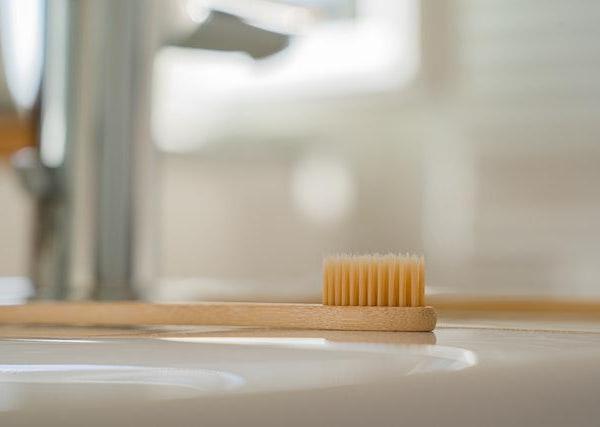Demineralization of the Teeth: Signs and Symptoms
The following signs and symptoms characterize demineralization of the teeth.1. The appearance of white spots on the teeth
Minerals are lost from your teeth during the first stage of demineralization. White spots will appear on your teeth when this occurs. Tooth decay begins with the loss of minerals in these areas.2. Tooth Sensitivity
Dentin is a softer layer underneath the enamel and is more susceptible to damage from mouth acids. In other words, tooth decay will cause rapid damage if it reaches the dentin. When your dentin is damaged, you will likely experience tooth sensitivity.3. Swollen gums and fever
Infections may result from tooth decay advancing into the pulp. The lower portion of your tooth becomes infected when swelling worsens, leading to an abscess. Abscesses are characterized by severe pain, swelling in the jaw, face, and gums, as well as fever. Neck lymph nodes may also swell in some patients.4. The presence of dark brown spots
Enamel will be further damaged if you do not take preventive measures to stop tooth decay. The tooth will now appear dark brownish when the white spots turn brown. You will also have tiny holes in your teeth if your enamel is weak. This is caused by dental cavities.5. Having a toothache
A tooth's pulp, which contains blood vessels and nerves, is its most sensitive layer. Additionally, these nerves provide sensation to the teeth. A compromised dental pulp can swell. Such inflammation causes immense pain and discomfort to the surrounding tissues, which exert pressure on the nerves.Remineralize Your Teeth
1. Maintain good oral hygiene
Brushing your teeth regularly is vital to remove bacteria from them. Streptococcus mutans is primarily responsible for dental cavities (also called dental caries). A study published in 2016 suggests that food and drink are routes of transmission for these bacteria. The bacteria that cause mineral loss and cavities can be removed from your teeth by brushing regularly.2. Boost saliva production
A key component of tooth enamel repair is maximizing saliva production. Saliva contains important components that neutralize acidic elements and restore minerals lost due to acidic diets. Calcium and phosphate are two of these essential components. Your body also defends itself against cavities with saliva.3. Make sure you drink enough water
In addition to supporting remineralization, tap water containing fluoride helps to replace some of the calcium in enamel. Your teeth can also be protected against acid damage by rinsing with fluoridated tap water following a meal or drink that contains acid.4. You need the right toothpaste
Your teeth can also be remineralized with fluoride, another naturally occurring mineral. Your teeth become more resistant to mineral loss when it forms a stronger building block called fluorapatite. Fluoride toothpaste can be used daily to brush your teeth. Toothpaste containing hydroxyapatite can also help repair teeth. In a study conducted in 2019, fluoride toothpaste was compared to toothpaste containing 10% hydroxyapatite. Mineral breakdown and cavities were prevented by hydroxyapatite toothpaste as effectively as fluoride toothpaste. However, more evidence is needed on these products.5. Eat a healthy diet
Some foods can help remineralize teeth that acidic foods and drinks have damaged. A diet rich in whole grains and lean proteins such as fish, eggs, and beans, as well as milk, cheese, yogurt, and fruits and vegetables that are rich in fiber, will help remineralize the enamel, improve saliva production, and provide a healthy dental environment. Reduce your intake of starchy, sugary foods and drinks.6. Stay away from acidic drinks
Fruit juices, sports drinks, and sodas all contribute to demineralization. These products contain high levels of sugar as well as high levels of acid, which wear down enamel and can lead to demineralization.7. Chew sugarless gum
It has been debated for decades whether gum promotes dental health, but studies suggest that sugarless versions may do so. A study concluded that sugar-free gum removes sugar, plaque, and carbs from teeth while also increasing saliva production. Mineral loss may also be prevented by gum. Consider chewing sugarless gum after or between meals to reap the benefits of remineralization.Remineralization of teeth: How long does it take?
Changing your diet and daily habits can help your teeth remineralize. Mineralization occurs 24 hours a day, but tooth repair takes time. A damaged enamel will need dental care to be repaired.To summarize:
Every day, teeth are exposed to elements that cause mineral loss. Throughout your life, your teeth are subjected to a lot of stress from food, drinks, saliva, and bacteria. Too much demineralization can ultimately wear down your teeth, even though they are designed to withstand these elements.In addition to consulting your dentist regularly, you can take steps to remineralize your teeth and stop any current demineralization.






